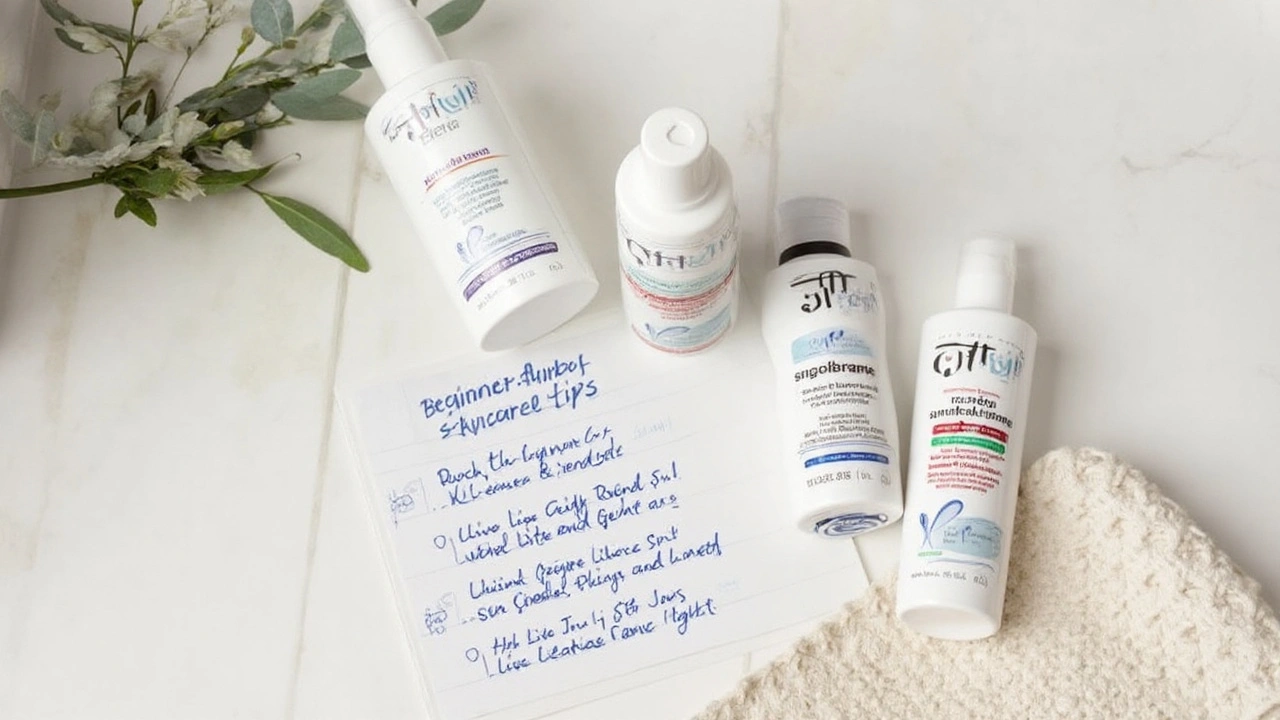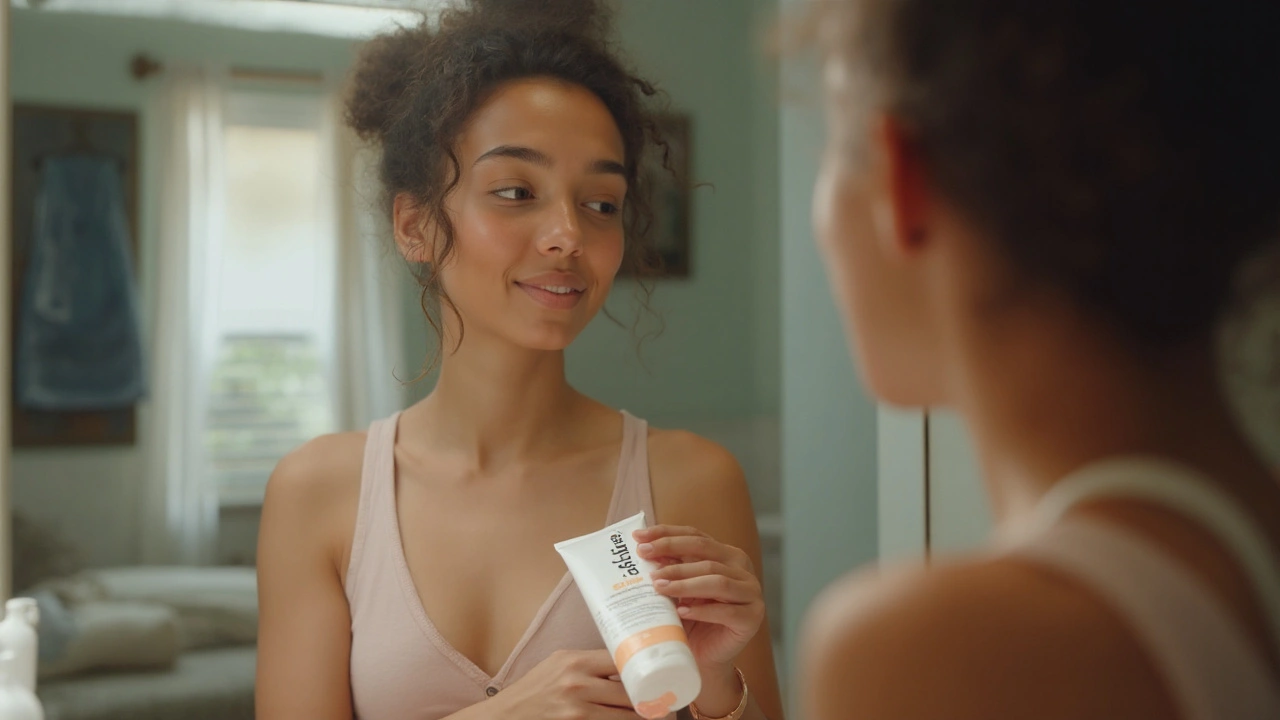You know that gut-dropping moment when a spot shows up on your chin right before a big day out? That little thrill of panic is all too common. Enter Differin—a skinny blue tube that promises clearer skin with the power of science behind it. This isn’t some overnight miracle supposedly found at the bottom of a TikTok rabbit hole. Differin’s claim to fame rests on decades of research, real clinical trials, and, for plenty of folks, a gradual transformation from bumpy to beaming skin. You’ll spot it on pharmacy shelves grabbing your eye with its “once daily” tease, but there’s a whole lot more than pretty packaging happening here. Sometimes the things that actually work are hiding in plain sight, and Differin is a quiet champion in the acne world.
What is Differin? The Science That Changed Acne Care
Differin isn’t just another cream. It’s the brand name for adapalene, a retinoid originally only available on prescription. Unlike the creams our parents reached for, adapalene is the first new over-the-counter acne-fighting medicine in over three decades. That’s a big deal. While plenty of products chase after bacteria, oil, or inflammation, adapalene focuses on one key target—speeding up the skin cell turnover process. In simple terms, it helps the skin shed dead cells before they block pores and start brewing pimples.
Here’s the cool part: adapalene is stable. This means that, unlike older retinoids, it doesn’t lose its punch the moment it meets light or oxygen. That makes Differin way less fussy. According to a 2016 paper in the Journal of Drugs in Dermatology, adapalene is roughly as effective as prescription retinoic acid but with fewer side effects. It targets comedonal acne (think pesky blackheads and whiteheads) but helps inflammatory acne too. Even more, its anti-inflammatory chops mean it calms redness and swelling as it clears your skin.
Beloved by dermatologists, Differin became available without a prescription in the US in 2016 and then across the UK. This shift opened up serious skincare to anyone fed up with endless, disappointing “quick fixes” lurking in the beauty aisle. If you’re tired of products that promise the moon and deliver nothing, Differin feels refreshingly real. And it’s not just about the acne: adapalene’s gentle cell renewal even helps reduce dark marks left behind by old breakouts. So, we’re talking science, not snake oil.
How Does Differin Work? Decoding the Power of Adapalene
Ever wondered how a small blob of gel holds back the onslaught of stubborn spots? Differin’s power sits in adapalene’s ability to literally teach your skin better habits. Instead of poking at surface-level problems like some face washes, it goes deeper, speeding up the natural life cycle of skin cells in the lining of pores. Dead cells that used to get stuck and cause those angry red bumps? Now, they get moved along before they have time to cause trouble.
This process doesn’t happen overnight. In fact, you might notice your skin gets a bit worse before it gets better—an effect called “purging.” It’s a wild ride, but for a reason: as the skin speeds up cell turnover, it pushes deep gunk and hidden blockages up and out faster. If you stick with it, that phase passes, often after 4 to 8 weeks. Meanwhile, Differin’s anti-inflammatory side helps soothe the redness and swelling that make breakouts especially miserable. That’s why you’ll see fewer red, swollen spots and a politer skin tone, too.
Differin stands out from other retinoids because of its chemical structure. It essentially binds only to the exact skin receptors needed for acne, meaning less irritation—perfect if you’ve tried prescription retinoids and felt like your face caught fire. Plus, adapalene doesn’t break down in sunlight, so you don’t have to be as hyper-vigilant about sun exposure (though sunscreen is still always your friend).
Want the bottom line? Unlike benzoyl peroxide, which just zaps surface-level bacteria, or salicylic acid, which only unclogs pores, Differin fights acne at its root. It nips future breakouts in the bud, not just the ones you see right now. Dermatologist Dr. Adil Sheraz reported in a 2021 interview that up to 87% of patients see fewer lesions after three months of steady Differin use. That’s not an empty marketing stat—it comes straight from published data reviewed in real clinics.
| Acne Treatment | Mechanism | Key Benefit | Typical Irritation |
|---|---|---|---|
| Differin (Adapalene) | Retinoid - cell turnover | Prevents blockages, reduces inflammation | Low-moderate |
| Benzoyl Peroxide | Antibacterial | Kills bacteria, fast spot reduction | Moderate |
| Salicylic Acid | Cleans pores/exfoliant | Unclogs, shrinks breakouts | Low |
| Tretinoin | Retinoid - cell turnover | Stronger unclogging | High |

How to Use Differin: Step-by-Step for All Skin Types
The temptation is real—slap on a thick layer and pray for miracles. Resist. Differin works best when introduced gently. If your skin leans dry, sensitive, or you’ve had trouble with retinoids before, you want to start slow. People in their teens or twenties, notice faster changes, but adults see big pay-offs too, just sometimes at a gentler pace.
- Be patient: Expect results after about 8-12 weeks. Initial purging is normal. Don't panic.
- Start with a pea-sized amount for your whole face. More is definitely not better here.
- Apply in the evening to clean, dry skin. Wait 10-20 minutes after washing to avoid the sting.
- Follow with a simple, no-frills moisturiser after 5-10 minutes. This reduces dryness and flaking.
- Stick to plain cleansers for your routine. Put away scrubs and acids for now—they’ll only cause more irritation.
- Always wear SPF in the daytime. Even though adapalene is more stable than other retinoids, your new, fresh skin cells are still more sensitive to UV.
- If your skin gets red or peels, cut use to every third night, building up slowly as your skin adjusts.
The “sandwich method” is trending on skin forums for a reason: it helps those with reactive skin. You put on a moisturiser, then Differin, then another light layer of moisturiser. It makes the process nearly painless and is easy enough to remember even if you’re half asleep.
Here’s something most people get wrong: you don’t need to quit Differin for periods, stress, or the odd sunburn. Just take it slow and stay consistent. According to NHS data, stopping and starting is one of the main reasons people don’t see results.
If you’re wondering about mixing Differin with other products, avoid strong acids, tea tree oils, and other retinoids. If acne is stubborn, a derm might add azelaic acid or antibiotics. But for most, Differin plays well with moisturisers, hydrating serums, or gentle face washes. And if you wear makeup? No drama. Just take it off gently each night.
Real-Life Results: Differin Success Stories and Myths
Plenty of people share dramatic before-and-after photos after a few months of Differin. What's more meaningful are the stories behind them. A support group I follow on Reddit often mentions how sticking it out through the miserable first few weeks finally paid off—unexpected confidence, clearer skin, fewer days spent hiding behind concealer. As with any medical treatment, you get your own timeline. For some, Results show in under a month. Others, it’s a slower simmer, with patchy peeliness and temporary breakouts along the way. Dramatic change tends to hit around the third month, so patience isn’t just a suggestion—it’s the secret weapon.
Biggest myth? That Differin “thins” the skin. That’s a misunderstanding. Retinoids like adapalene actually help rebuild the supportive lower layers by boosting collagen, based on long-term studies. Another myth: you have to stop Differin in summer. Not true—just use SPF religiously. More than one survey has clocked that UK users are more likely to see good results when sticking with it through every season rather than pausing for a holiday.
Some people get put off by flaking, dryness, or that infamous purge stage. Real talk—it can be awkward, and you might feel worse before you feel better. A 2022 study by Dr. Stephanie Williams in London noted that moisturising twice daily cuts side effects in half. Another good trick? Avoiding hot water on your face and switching pillowcases every few days.
But what Differin can’t do: it won’t clear up cystic acne alone, nor can it zap pimples overnight. It’s useless against fungal acne (yes, it exists!) or rosacea. So don’t bother unless you’re looking to fix textbook acne—those classic pores and bumps. If you stick to honest use, though, very few other over-the-counter options get even close.

Expert Tips for Getting the Most Out of Differin
Want to up your Differin game? Remember, skin care is a long haul, not a sprint. Start with the basics—set a reminder to apply every night at the same time. If you get dry patches, grab a basic, fragrance-free moisturiser (Cetaphil or CeraVe creams work). Using just one or two products with Differin is better than building a complicated skincare cocktail; your skin prefers stability over variety.
If you’re dealing with sensitive skin, buffer Differin by layering over moisturiser, or using every other night at first. Carry a hydrating mist or serum to work for midday boost—environmental dryness amplifies flaky skin. Don’t forget the lips. They’re often collateral damage, so a heavy-duty balm can save you chapped misery.
Try tracking your journey with monthly photos—it’s hard to spot slow change, but a picture never lies. If you hit a true wall (think months without a single improvement, or painful burning), chat with your GP or a dermatologist about moving to combination treatments. If you’re worried about expense, Differin is available on many NHS prescriptions if acne is stubborn—but if not, a single tube costs less than most luxury face masks and lasts for up to three months. That’s real value.
For parents, Differin is generally safe for teens over age 12, but always check with your family doctor if you’re nervous. Pregnant or breastfeeding? Give adapalene a miss—there’s not enough research on safety yet.
When storing Differin, keep it capped, away from damp bathrooms. This preserves potency, especially in the UK where central heating dries the air and can cause the formula to thicken if left open. And don’t share tubes—what works for your mate’s skin chemistry could wreak havoc on yours.
Armed with a solid plan, a bit of patience, and expectations set by real science, Differin can do what those endless spot stickers and acid cleansers rarely achieve: genuine, long-term improvement. Want proof? Ask just about anyone who’s spent less time obsessing over their skin and more time enjoying life. That’s the ultimate goal—a little blue tube that quietly gives you your confidence back.
